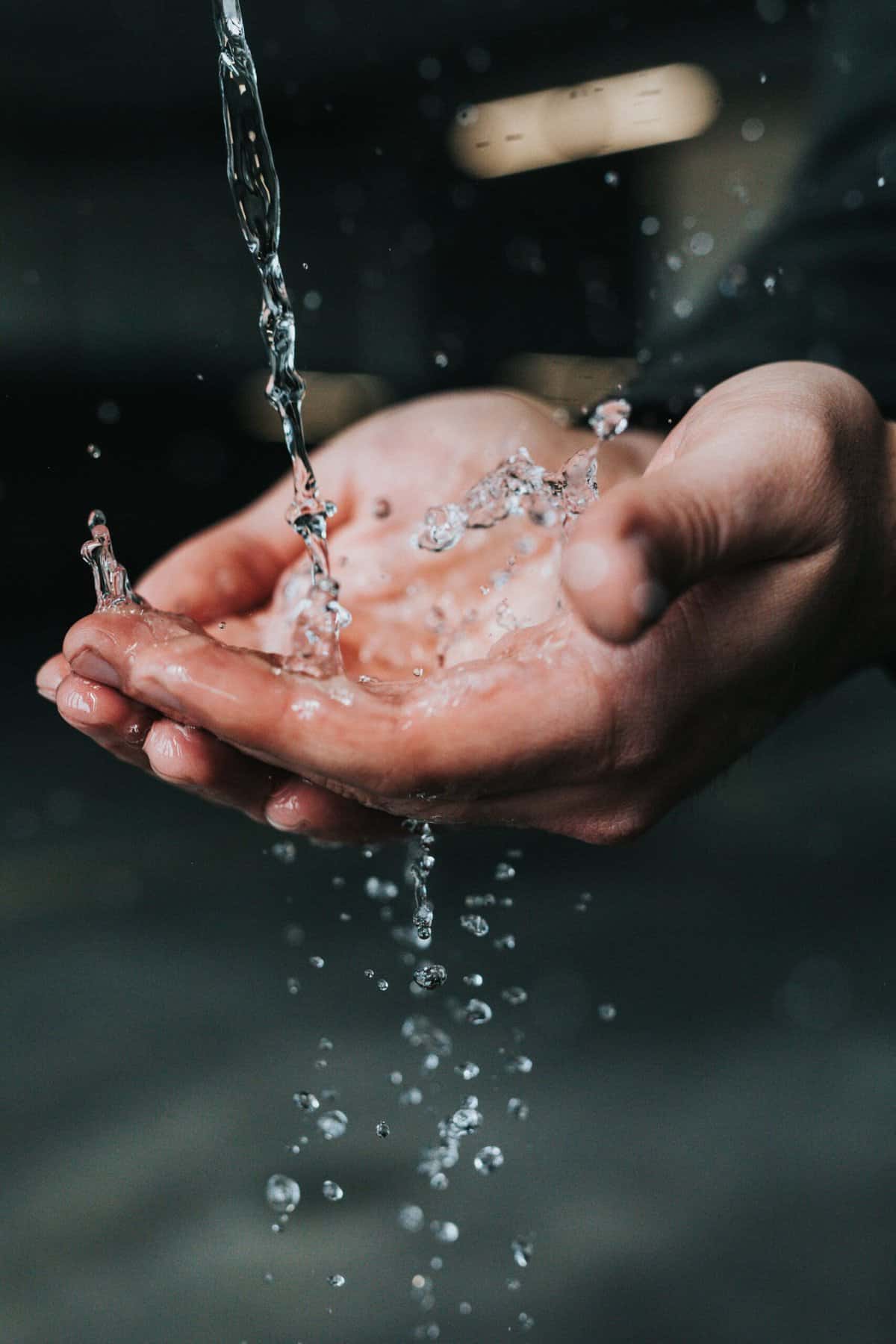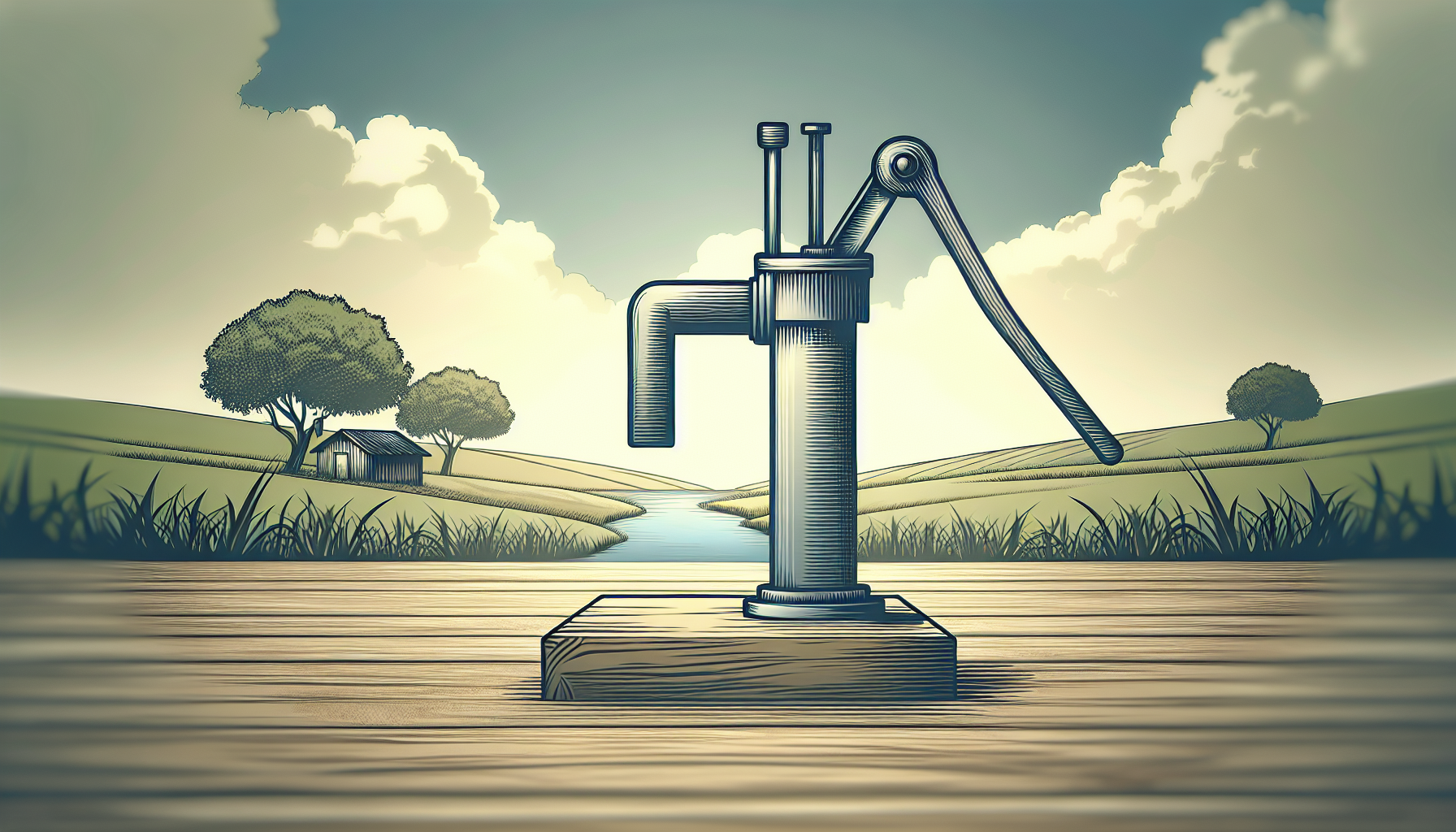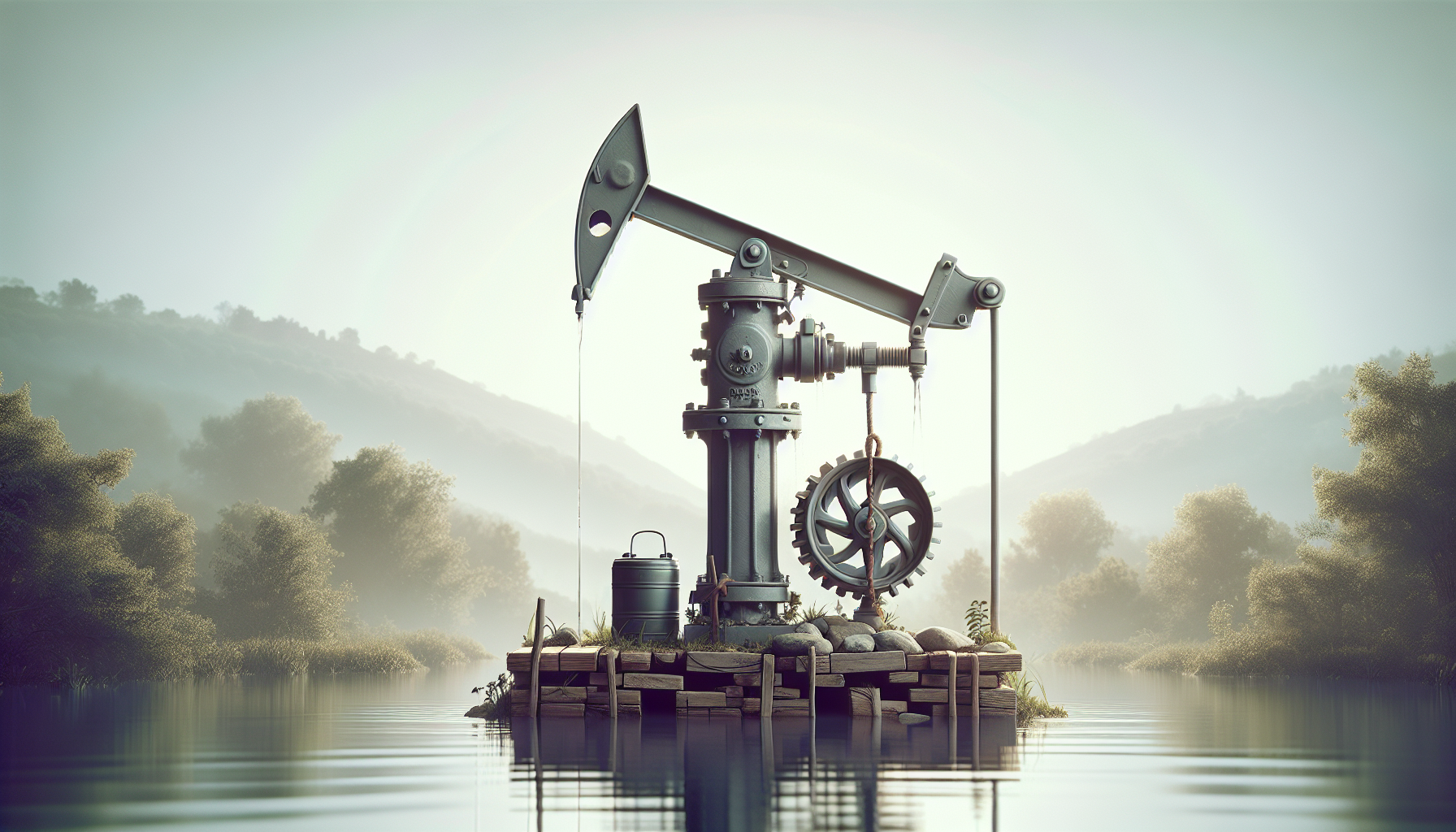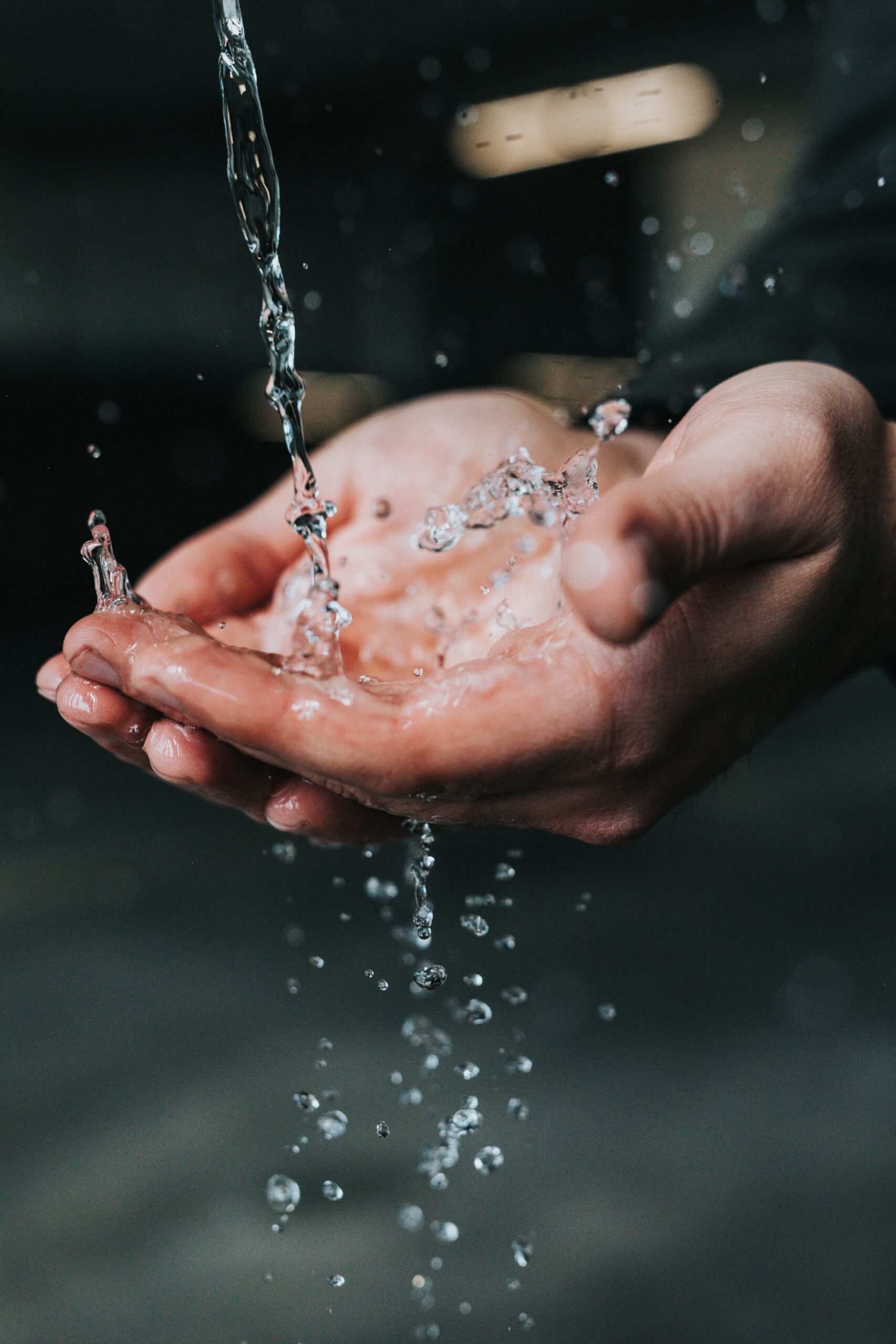Facing power outages and well water pressure loss can be a daunting experience, especially when it comes to keeping your well water safe. But fear not, as this article will guide you on how to maintain well water safety during these challenging times. Whether you’re dealing with a sudden power outage or a drop in well water pressure, we’ve got you covered with practical tips and solutions to ensure the safety and security of your well water. So, let’s dive in and discover how you can protect your well water during these unexpected circumstances.
Preparing for Power Outages
Power outages can happen unexpectedly, leaving you without electricity for hours or even days. During these times, it is important to have a plan in place to ensure the safety and functionality of your well water system. There are several steps you can take to prepare for power outages and minimize any potential issues.
Checking and maintaining generator
If you have a generator to provide backup power during outages, it is essential to regularly check and maintain it. This includes inspecting the generator for any damage, ensuring it is fueled and ready to go, and testing it periodically to make sure it is functioning properly. It is also important to have a sufficient supply of fuel stored safely and reliably.
Investing in a battery backup system
In addition to a generator, investing in a battery backup system can be a great way to ensure uninterrupted power supply for your well water system. These systems can provide power during short outages and give you the time to take necessary steps to protect your water quality and pressure.
Having emergency water storage
During power outages, it is important to have a supply of emergency water stored for drinking, cooking, and sanitation purposes. This can be done by keeping several gallons of water in food-grade containers or investing in portable water storage tanks. It is recommended to store at least one gallon of water per person per day for a minimum of three days.
Understanding the impact of power outages on well water safety
Power outages can have a significant impact on the safety of your well water. Without electricity, your well pump will not function, leaving you without access to fresh water. It is important to understand the potential risks and take necessary precautions to ensure the safety of your well water during these times.
Ensuring Water Quality during Power Outages
During power outages, there are specific steps you can take to maintain the quality of your well water. By following these guidelines, you can minimize the risk of contamination and ensure the safety of the water in your well.
Keeping well cap secure
One of the first things you should do during a power outage is to make sure your well cap is securely fastened. This will prevent any debris or contaminants from entering your well while the power is out. Inspecting the well cap regularly and ensuring it is properly sealed will help maintain water quality and prevent potential issues.
Disinfecting and flushing the water system after a power outage
Once power is restored after an outage, it is important to disinfect and flush your water system to remove any potential contaminants. This can be done by adding a chlorine solution to the well and running the water until the chlorine smell dissipates. It is recommended to consult a professional or follow specific guidelines provided by your local health department for proper disinfection procedures.
Regular well water testing
Regular testing of your well water is essential for ensuring its safety, especially during power outages. Testing can identify any potential issues or contaminants that may have entered the water supply during an outage. It is recommended to test your well water at least once a year for bacteria, nitrates, and other contaminants, and more frequently if you suspect any problems.
Using water filters and purifiers
To provide an extra layer of protection for your well water, consider using water filters and purifiers. These devices can help remove potential contaminants and improve the taste and quality of the water. There are various types of filters and purifiers available, including carbon filters, reverse osmosis systems, and ultraviolet (UV) sterilizers. Choose the one that best suits your needs and follow the manufacturer’s instructions for proper installation and maintenance.

Maintaining Water Pressure during Power Outages
Loss of power can lead to a decrease in water pressure in your well system. However, there are measures you can take to maintain adequate water pressure and ensure the functionality of your well during outages.
Maintaining proper well pump functionality
Regular maintenance of your well pump is crucial for maintaining water pressure, especially during power outages. It is recommended to have your well pump inspected and serviced by a professional at least once a year, including checking the pressure switch, motor, and other components. This will help identify any potential issues and ensure your pump is in good working condition.
Installing a pressure storage tank
To maintain a steady water pressure during power outages, consider installing a pressure storage tank. This tank stores pressurized water and can be used as a backup supply during outages. When the power is restored, the tank will automatically refill, ensuring a continuous flow of water to your home.
Optimizing water usage during outages
During power outages, it is important to conserve water to minimize the strain on your well system. Avoid unnecessary water usage, such as watering the lawn or filling up large containers. Be mindful of your water consumption and use it sparingly until power is restored. This will help maintain water pressure and extend the supply available in your well.
Protecting the Well System
Protecting your well system from potential damage is essential to ensure its longevity and functionality. There are several measures you can take to safeguard your well system during power outages and extreme weather conditions.
Securing well head with a cover
One of the simplest ways to protect your well system is by securing the well head with a cover. This will prevent any debris, animals, or contaminants from entering the well during outages or severe weather events. Choose a cover specifically designed for well heads and ensure it is securely fastened to provide adequate protection.
Insulating pipes and pressure tanks
Insulating pipes and pressure tanks can help prevent damage caused by freezing temperatures during power outages in colder climates. By applying insulation materials, such as foam or heat tape, to exposed pipes and tanks, you can reduce the risk of freezing and bursting. It is important to insulate all vulnerable components of your well system to ensure their integrity.
Preventing frozen pipes and equipment
To prevent frozen pipes and equipment during power outages in cold weather, there are additional steps you can take. Keep your well house or pump house adequately heated to maintain a moderate temperature. Consider using heat lamps or space heaters, but exercise caution and follow safety guidelines to avoid fire hazards. Additionally, allowing a slow, steady drip from faucets can help prevent freezing in the pipes.

Repairing Damages and Seeking Professional Help
Power outages and extreme weather events can potentially cause damage to your well system. It is important to be vigilant and observe any signs of damage to ensure prompt repairs and prevent further complications.
Recognizing signs of damage
After power is restored, carefully inspect your well system for any signs of damage or malfunctioning. Some common signs of damage include leaks, unusual noises, loss of water pressure, and contamination. If you notice any of these signs, it is crucial to take immediate action to prevent further issues and ensure the safety of your water supply.
Taking immediate actions for repairs
If you identify any damages or issues with your well system, it is crucial to address them promptly. This may involve repairing leaks, replacing damaged components, or even installing a new well pump. It is recommended to consult a licensed well professional who can assess the situation and provide appropriate solutions based on their expertise.
Contacting a licensed well professional
When it comes to repairing damages to your well system or seeking professional assistance, it is important to contact a licensed well professional. These professionals have the knowledge and experience to properly diagnose and fix any issues with your well system. They can also provide guidance on preventive measures and maintenance to ensure the long-term functionality and safety of your well water.
Educating Family Members on Well Safety
In order to maintain well water safety during power outages, it is crucial to educate your family members on well safety protocols and emergency procedures. By sharing this knowledge, you can empower your loved ones to take necessary precautions and respond effectively in case of any well-related issues.
Sharing well water safety protocols
Make sure to inform your family members about the importance of well water safety and the potential risks associated with power outages. Explain the steps they should take to protect the water quality and pressure, such as securing the well cap, conserving water, and disinfecting the system if necessary. Regularly reinforce these protocols to ensure everyone understands their role in maintaining well water safety.
Training family members on emergency procedures
In addition to well water safety protocols, it is essential to train your family members on emergency procedures specific to your well system. This may include understanding how to operate the well pump, knowing the location of shut-off valves, and being aware of any special instructions or precautions related to your well. Conduct regular drills or discussions to ensure everyone is familiar with these procedures.

Being Prepared for Extended Outages
While power outages are typically temporary, there may be instances when outages extend for an extended period. Being prepared for such situations can help ensure the well-being of your family and the functionality of your well system.
Contacting local emergency authorities
In the event of an extended power outage, it is important to contact local emergency authorities for guidance and updates. They can provide valuable information on community resources, assistance programs, and safety guidelines specific to your area. Stay informed and follow their directions to ensure the well-being of your family.
Creating an emergency plan
Developing an emergency plan specifically tailored to your well system is crucial for ensuring preparedness during extended outages. This plan should include details on alternative water sources, such as local distribution centers, neighbors with functioning wells, or emergency water deliveries. Additionally, identify the steps you will take to maintain water quality and pressure, and assign responsibilities to family members to ensure everyone knows their roles.
Storing an adequate supply of clean drinking water
During extended power outages, it is important to have a sufficient supply of clean drinking water stored. This includes not only storing emergency water for immediate needs but also replenishing and rotating your water supply periodically to ensure freshness and safety. Remember to store water in food-grade containers and keep it in a cool, dark place to maintain its quality.
Understanding Waterborne Diseases and Risks
Waterborne diseases can pose a significant risk during power outages and well water pressure loss. Understanding the symptoms and taking preventive measures can help protect your family from potential health hazards.
Recognizing symptoms of waterborne diseases
Common symptoms of waterborne diseases include diarrhea, vomiting, stomach cramps, fever, and fatigue. If you or your family members experience these symptoms after consuming well water during a power outage, it is important to seek medical attention and inform your healthcare professional about your well water source. They can provide appropriate diagnosis and treatment based on your symptoms and potential exposure to contaminants.
Taking preventive measures
To prevent waterborne diseases, it is important to take preventive measures during power outages and any situation that may compromise the safety of your well water. This includes following well water safety protocols, disinfecting the water system after outages, and using filters or purifiers to remove potential contaminants. It is also recommended to avoid consuming untreated well water if it appears discolored, has a strange odor, or tastes unusual.
Consulting a healthcare professional when needed
If you suspect that you or your family members have been exposed to waterborne diseases during a power outage, it is important to consult a healthcare professional. They can assess your symptoms, provide appropriate treatment, and guide you on any necessary testing or precautions. Prompt medical attention is crucial for early diagnosis and effective management of waterborne diseases.

Responding to Contamination or Discoloration
Contamination or discoloration of well water may occur during power outages or well water pressure loss. It is important to respond promptly and take appropriate measures to address these issues before using the water for any purpose.
Checking for signs of contamination or discoloration
After a power outage or well water pressure loss, carefully inspect your well water for any signs of contamination or discoloration. This may include cloudiness, changes in color or taste, presence of sediments or particles, or an unusual odor. If you notice any of these signs, it is important to avoid using the water until the issue is resolved.
Implementing appropriate treatments
Depending on the nature and extent of contamination or discoloration, there are several treatments you can implement to restore the quality of your well water. This may include disinfection using chlorine or other treatment chemicals, flushing the system with clean water, or installing additional filters or purifiers. It is recommended to consult a licensed well professional or follow specific guidelines provided by your local health department for appropriate treatment methods.
Seeking professional assistance if needed
If you are unable to determine the cause of contamination or discoloration, or if the issue persists despite initial treatments, it is important to seek professional assistance. A licensed well professional can conduct a thorough assessment of your well system, identify the source of the problem, and provide appropriate solutions. It is crucial not to ignore any signs of water contamination as it can pose serious health risks to you and your family.
Following Legal and Regulatory Guidelines
To ensure the safety and compliance of your well system, it is important to understand and follow the legal and regulatory guidelines set forth by your local authorities. These guidelines are designed to protect public health and promote the responsible use of well water resources.
Understanding local regulations
Every locality may have specific regulations and requirements governing well systems and well water safety. It is important to familiarize yourself with these regulations and ensure compliance with all applicable standards. This may include registration or permitting of your well, regular testing and maintenance requirements, and adherence to water use restrictions if imposed.
Keeping records of well maintenance and testing
Maintaining accurate records of well maintenance and testing is essential for both your well’s functionality and compliance with regulations. This includes keeping documentation of well inspections, repairs, water sample results, and any other relevant information. These records will not only help you track the condition of your well system but also provide evidence of your compliance with regulatory requirements if needed.
Complying with health and safety standards
In addition to local regulations, it is important to comply with established health and safety standards for well water systems. These standards may include guidelines for proper construction, installation, and maintenance of your well, as well as recommended testing frequencies and methods. By following these standards, you can ensure the ongoing safety and functionality of your well water system.
In conclusion, preparing for power outages and maintaining well water safety and pressure is essential for the well-being of your family and the functionality of your well system. By implementing the appropriate measures, such as checking and maintaining your generator, investing in a battery backup system, and having emergency water storage, you can minimize the impact of power outages on your well water system. Additionally, ensuring water quality through measures like disinfecting and flushing the system, regularly testing the well water, and using filters and purifiers can help safeguard your family’s health. Proper maintenance of the well pump, installation of a pressure storage tank, and optimizing water usage during outages can help maintain water pressure. Taking steps to protect the well system, recognizing signs of damage, and seeking professional help when needed are crucial for preventing further complications. Educating your family members on well safety, being prepared for extended outages, understanding waterborne diseases and risks, and responding to contamination or discoloration are additional measures to ensure the safety of your well water. Lastly, following legal and regulatory guidelines and keeping records of maintenance and testing will help maintain compliance and ensure the long-term functionality of your well water system. By being proactive and informed, you can navigate power outages and potential challenges to your well water system with confidence.


